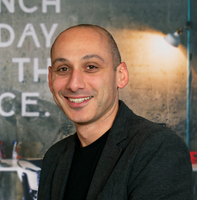
The offline and online worlds have come a long way in the past few years. Especially during COVID-19, many brands have learned the need to make the two words coexist to leverage each other’s strengths and unique points to drive growth in a difficult time.
It’s not uncommon, however, to hear traditional brands leveraging the digital channel (specifically the mobile app) to engage users in new ways and stay relevant to their audience. In the same way, many digital-first organizations have used (and still do) offline seasonal events to create hype and drive digital sales. Christmas, Summer Holidays, New Year’s Eve, Eleven-eleven, and Black Friday are just some examples of well-known periods of the year used strategically to drive activities offline, online, and both ways.
It’s a win-win situation for both users and businesses.
Identifying the best way to connect the two worlds, creating a meaningful cross-channel marketing strategy, while defining an integrated communication that touches on different parts of the user journey, however, can be complicated. Depending on the company size and the management directions, aligning different departments and creating clear goals is challenging.
Which channel drove that offline sale? Was it the in-store promotion, the TV campaign or the Facebook ad? Where should the budget go?
Instead of focusing on the end goal, departments get often lost in details.
Aligning on one common goal
When working with our partners, we are frequently responsible for more than just one activity. This allows us to connect the dots more easily and draw that common line across departments, aligning teams to the end goal.
Thanks to our unique position as an external consultant, that operates as an internal team member, we connect with decision-makers and discuss how to drive growth.
Winelivery: driving sales off-season through an offline event
Winelivery has been one of our key partners for the past 16 months (see Case Study). It has been operating in the Italian market for the past 5 years, but with COVID-19 and the forced lockdown, the company experienced a real boom, becoming effectively one of the hottest startups operating in the delivery space in Italy.
Our team of experts has worked closely with the team and CEO, to constantly identify opportunities across different areas, from ASO to CRM, passing through Paid User Acquisition.
Time for a MarTech health check
Is your MarTech stack fueling growth or wasting budget? Spot the issues and fix them fast with this free guide from the experts at ConsultMyApp.
Download nowThe challenge
Due to the nature of the product, beverage delivery, Winelivery’s offering, and growth have depended heavily on seasonality. Summer has been historically a hard season for the company, seeing sales plummeting and growth stagnating.
The challenge that we were faced with was complicated, requiring both teams to think laterally and in new ways. With those factors in mind, our main objective was to decrease the seasonality effects, trying to keep the order rate steady (if not increasing it).
With luck on our side, the Summer of 2021 had one major offline event coming up, the Euro Cup 2020. This meant we could take advantage of the event of the year, in a country where football is almost as important as religion, to center our communication strategy for both acquisition and retention.
The approach: an integrated communication strategy
With one goal in mind and the possibility to shape the user journey from the very first touchpoint to conversion and retention, we had to align all the communications around the EURO2020.
Our team started from the creative used to acquire new users. We worked closely with the design team to focus all the creative assets on the football event. The theme of our communication strategy was (obviously) to support the Italian football team. For this reason, we started using the colours of the national team, as well as combining a wide range of cheering texts in the ad copies.
The real game-changer from the creative standpoint was the idea of using an emotional video that reminded the Italian fans of previous victories in football competitions (e.g. World cup 2006 and 1982), and invited literally users to “Cheer for new glory”.
The change of communication style didn’t only involve the user acquisition activities but extended also to re-engagement activities on Facebook and Instagram. All the creatives were aligned to the same “FORZA AZZURRI” theme, and the budget was spent on those days in which Italy played, maximizing engagement and conversions.
Then the special promotional codes came into play to reinforce further users’ actions.
We created a series of tailor-made discounts associated with acquisition campaigns but also used for retention purposes. For example, instead of just giving out discounts any time a football game was live, we focused on distributing special discounts only when Italy played, from the preliminary games down to the final. We leveraged all the possible communication channels to trigger users’ reactions.
One last step that we felt was needed to create an emotional bond with the users, was to connect the online with the offline world.
In agreement with the Winelivery team, we decided to distribute t-shirts to support the national team with a “FORZA AZZURRI” printed on them. On the other hand, high-spenders were targeted directly in-app with a slider with a special promo, giving them the free t-shirt for orders above 50 Euro, with the aim of increasing the basket size.
The results: offline & mobile – a formula for success
The integrated communication strategy led to immediate positive results in terms of both acquisition and retention. The changes implemented not only guaranteed an increase in user acquisition compared to the previous year but also better figures on main KPIs. Despite being low season, we managed to acquire 13.4% more users than in 2020, and most importantly, both the cost per install (CPI) and cost per first purchase (CPA) decreased by 19% and 11.63% respectively, compared to the previous months (high-seasonality). When looking at the retention strategy, we also noticed a positive uplift. We saw an increase in engagement rate by 22.9% and in conversion rate for existing users by 9.68%.
Most importantly, once this was done, we sat with the management and after looking at the data, we noticed a noticeable impact on YoY revenue
Leveraging offline events to boost online sales
The results achieved with Winelivery in this particular case were not a matter of luck. Certainly, the EURO2020 event ignited our creativity to create an integrated marketing communication plan to leverage all possible touchpoints with users, both existing and new.
Both marketers and entrepreneurs should have a wider view of how the offline and online worlds can support each other to lead to business growth. However, “using” common offline events, nowadays is not enough. Users are literally bombarded with special offers and promo codes when events approach. But, how do you stand out from the crowd?
- Align on one common goal across departments
- Have cross-functional experts to lead activities
- Identify all possible interaction points with the user base
- Align the communication (both visual and text) from first to the last touchpoint
- Leave room for creativity
- Do not forget to use physical reinforcement to bond with your audience
Would you like to implement an integrated marketing strategy to grow your mobile app effectively? Please, contact Luca Mastrorocco, REPLUG Co-founder & Head of Growth, at luca@rplg.io.















